How quickly we forgot the crisis in 2020. New York City, an early epicenter, was “so inundated with corpses that they were just incapable of holding them all” with bodies stored in refrigerated trucks. Hospitals and health systems were overwhelmed, with sick patients lying on gurneys in the hallway or in their cars in the parking lots. I could go on here, but you certainly remember the picture.
There were projections going back to April 2020 that we could have a vaccine to protect us from the virus within 18 months. Most of us didn’t believe that was remotely possible, knowing the average time it took for a successful vaccine directed against a new pathogen was over 8 years. And that’s not including the many that have failed, despite attempts over several decades, like HIV, tuberculosis, CMV, and plenty of others. The realistic projection was pegged to November 2033. That date is not a typo!
As you well know, in the United States and other countries, mRNA Covid vaccines began distribution in December 2020, an unprecedented accelerated timeline in the same calendar year that SARS-CoV-2 was sequenced. Two large Phase 3 randomized trials, with over 74,000 participants (at their completion, not from any early interim analysis), demonstrated 95% reduction of symptomatic Covid. Here’s the Table I made back then summarizing how rapidly this took place.
Of course, mRNA vaccines were not the only ones produced. Early on Oxford/Astra Zeneca and J & J had very effective vaccines using different adenovirus vector constructs, along with many others using traditional methods like protein subunits (such as Novavax or Corbevax) or inactivated virus. But if you look at the up-to-date data for well over 13.5 billion doses administered globally, outside of China and India, it’s dominated by mRNA vaccines as shown below. An important misconception: the mRNA and lipid nanoparticle package, which ultimately accounted for the success of the Covid vaccines, was the culmination of discovery work over 3 decades. This was not a flash in the pan!
Just in 2021 alone, an estimated 20 million lives were saved by the vaccines.
If you add in the projections through the current time, that figure is likely over 50 million deaths that were averted. Moreover, it’s not only the deaths prevented, there was marked suppression of severe Covid hospitalizations, even as evolution of the virus to Omicron challenged vaccine protection against infection or transmission, and some protection provided against Long Covid. And, more generally as the Economist wrote this week, they freed billions more to live normally again.”
It’s Not Just About the Covid Vaccines
Most people think the Nobel Prize awarded to Katalin Karikó and Drew Weissman this week was for their invention of mRNA vaccines. That’s actually wrong. What they did was a monumental discovery published in 2005 in the journal Immunity (after being rejected from Science and Nature). Late in 2021, the editors of Immunity asked several of us to offer perspective about their breakthrough for delivering mRNA without inciting a substantial inflammatory response. Here’s what I wrote. If you want to cut to the chase, just read the last line.
It was for this reason—enabling a broad therapeutic platform—that I took initiative to write recommendations and support letters for every prize conceivable on behalf of Karikó and Weissman, including the following:
AAMC Award for Distinguished Research in the Biomedical Sciences, 2022, 2023
Albert Einstein World Award of Science, 2022
Gruber Genetics Prize, 2021
Harvey Prize in Human Health, 2023
Heineken Prize for Medicine, 2022
Richard N. Merkin Prize in Biomedical Technology, 2023
NAM David and Beatrix Hamburg Award for Advances in Biomedical Research and Clinical Medicine, 2022
National Medal of Science, 2022
Wiley Prize in Biomedical Sciences, 2022, 2023
WLA Prize in Life Science or Medicine, 2022
Lasker Award, 2022
Their work, of course, predictably culminated in Nobel Prize recognition. As the Nobel Committee explained: The discovery “fundamentally changed our understanding of how mRNA interacts with the immune system.”
Parenthetically, the story of Karikó and Weissman is one for the ages, well suited for a movie script. Karikó, as the daughter of a butcher, who emigrated to the United States to pursue her science on mRNA delivery, smuggling $1,200 in her daughter’s teddy bear (she was only allowed to leave the country with $100), serendipitously pairing up with Weissman after a meeting at a U. Penn copy machine, and with their very complementary interests and expertise, a long-term partnership emerged that took remarkable perseverance. Lack of NIH grant support eventually led to Karikó’s demotion and departure from Penn, exit to BioNTech, and now on the faculty at the University of Szeged, where she did her PhD.
The Extraordinary Range of mRNA Vaccines and Therapeutics
We still don’t know if mRNA vaccines are better at protecting vs SARS-CoV-2 than some other types of vaccines, especially looking at some comparisons for longer term T-cell induction and durability with adenovirus vector vaccines, such as Johnson & Johnson Ad26.COV2.S. But a clearcut strength is how fast and easy they are to produce (within weeks at scale)—taken from the genetic sequence, packed in a lipid nanoparticle. This method preempts the need for bioreactors that have poor yields and are prone to contamination.
Now mRNA vaccines are in a wide range of clinical trials, as I previously reviewed including so many infectious diseases, summarized below. An update is that the Moderna mRNA CMV vaccine is now in Phase 3, earlier Phase 2 data look very promising, and it would be the first CMV vaccine since this virus was isolated in 1960. This commentary by leading vaccinologists on a universal flu vaccine is quite encouraging. There’s also much work in experimental models that look promising, such as vs. Lyme disease.
It’s not just infectious diseases. Take a look at the different cancers being approached in the Table below. An update is that in July this year the melanoma trial (mRNA-4157) below entered into Phase 3 with immunotherapy plus pembrolizumab (Keytruda). The phase 2 trial of 157 patients demonstrated that 79% of high risk patients who got the mRNA vaccine plus Keytruda were alive and cancer-free at 18 months, compared with 62% of patients with Keytruda alone.
There’s also mRNA enhanced delivery for genome editing with multiple clinical trials that have been initiated in such conditions as cystic fibrosis, ornithine transcarbamylase deficiency, and transthyretin amyloidosis.
Tolerogenic vaccines, which suppress the immune response in autoimmune diseases (a topic I recently wrote about here) are in pre-clinical development for multiple sclerosis, rheumatoid arthritis and other conditions.
As Matthias Stephan recently told Nature, “The sky’s the limit…For whatever you want to correct, or whatever you want to treat, there could be an mRNA medicine—that’s the excitement.”
And it’s not just vaccines, but using mRNA as a therapeutic, as well reviewed here, along with the challenges that lie ahead
It’s important to point out that mRNA, no less the nanoparticles in the package (link for review of nanoparticle improvement ), can be markedly improved. Modifications for mRNA can improve protein expression efficiency and stability. These can be made at many sites [5’UTR, 3’UTR, translated region, the 5’cap, Poly (A)], along with self-amplifying mRNA (being used currently in a Rabies vaccine trial), long-coding RNA, and circular RNA. The field of circular RNA, in particular, has really heated up, and Nature had a feature on it this week. Early clinical trials for a synthetic circRNA as a therapeutic in cancer to rev up the immune response have been initiated.
Bottom Line
The Karikó-Weissman breakthrough has evolved as a remarkable foundation for new vaccines, for both infectious diseases for which we didn’t have a vaccine, and many non-infectious diseases, and as therapeutics. The multiple refinements in mRNA itself, no less how it is packaged, may ultimately lead the discovery in 2005 to be one of the most important platforms to emerge in this history of biotechnology, in good company with the 2020 Nobel Prize in Chemistry to Jennifer Doudna and Emmanuelle Charpentier for their groundbreaking discovery work on CRISPR genome editing. It’s noteworthy that none of the “tweaks” of mRNA have yet to enter large scale clinical trials, so we should consider what we have seen to date as the early days of mRNA. In many ways, the 2023 Nobel Prize in Physiology or Medicine may someday be viewed as a promissory note for the unprecedented expansion of mRNA’s utility to promote or preserve human health in the future. Let’s hope it won’t take another pandemic to add to its exceptional success story.
Thanks for reading and subscribing to Ground Truths!

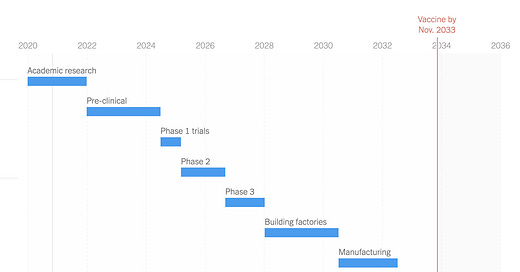


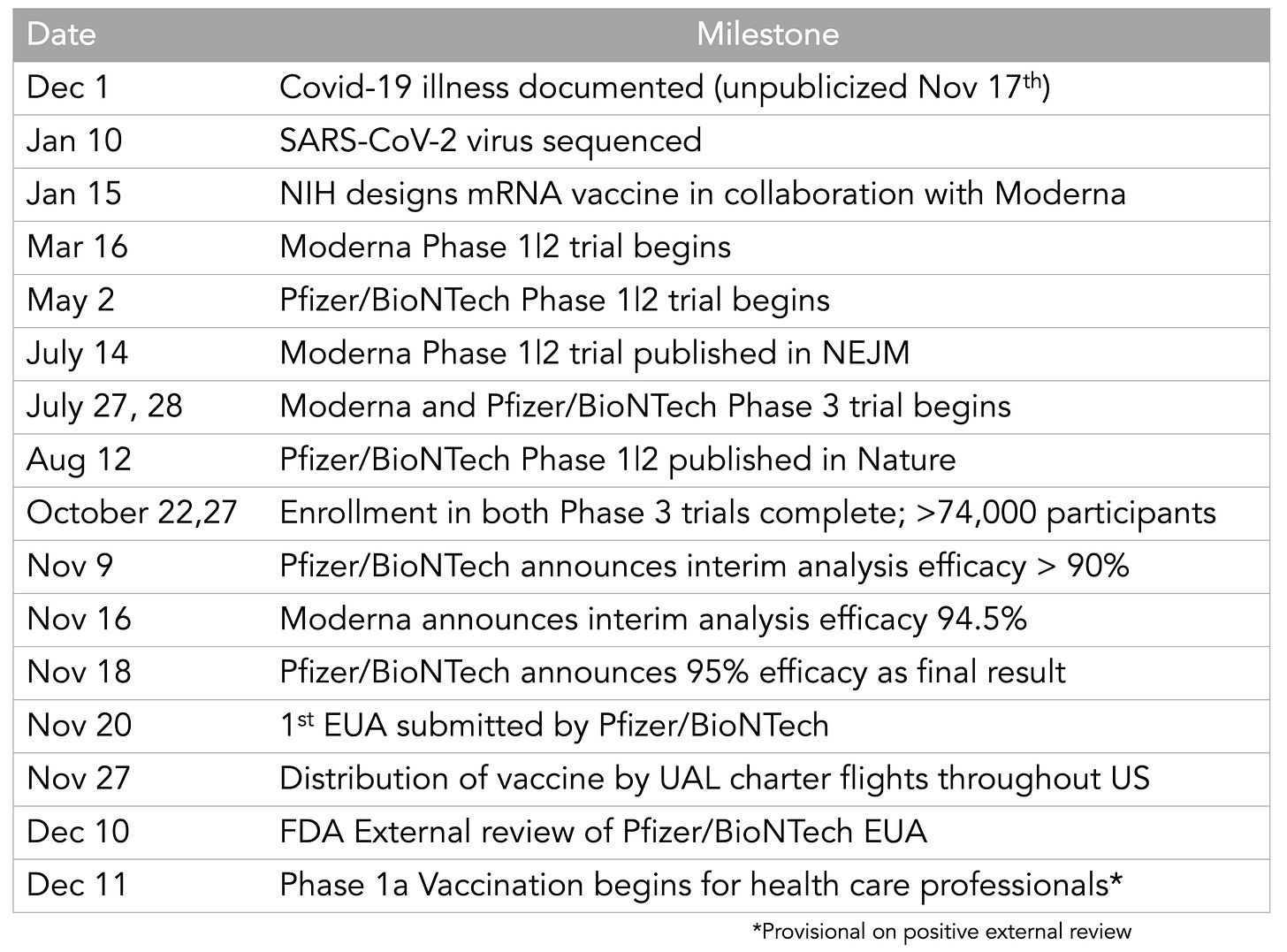


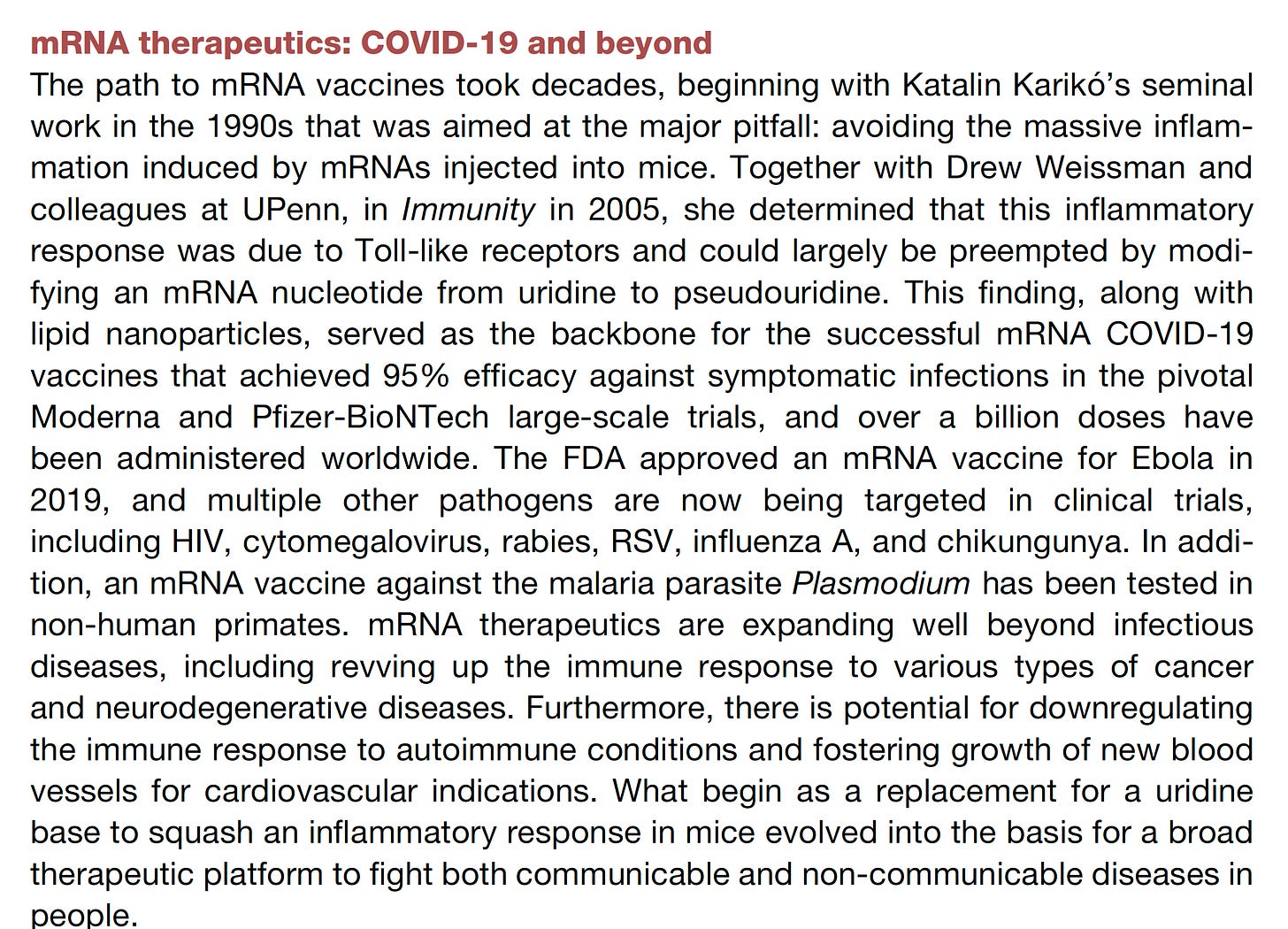
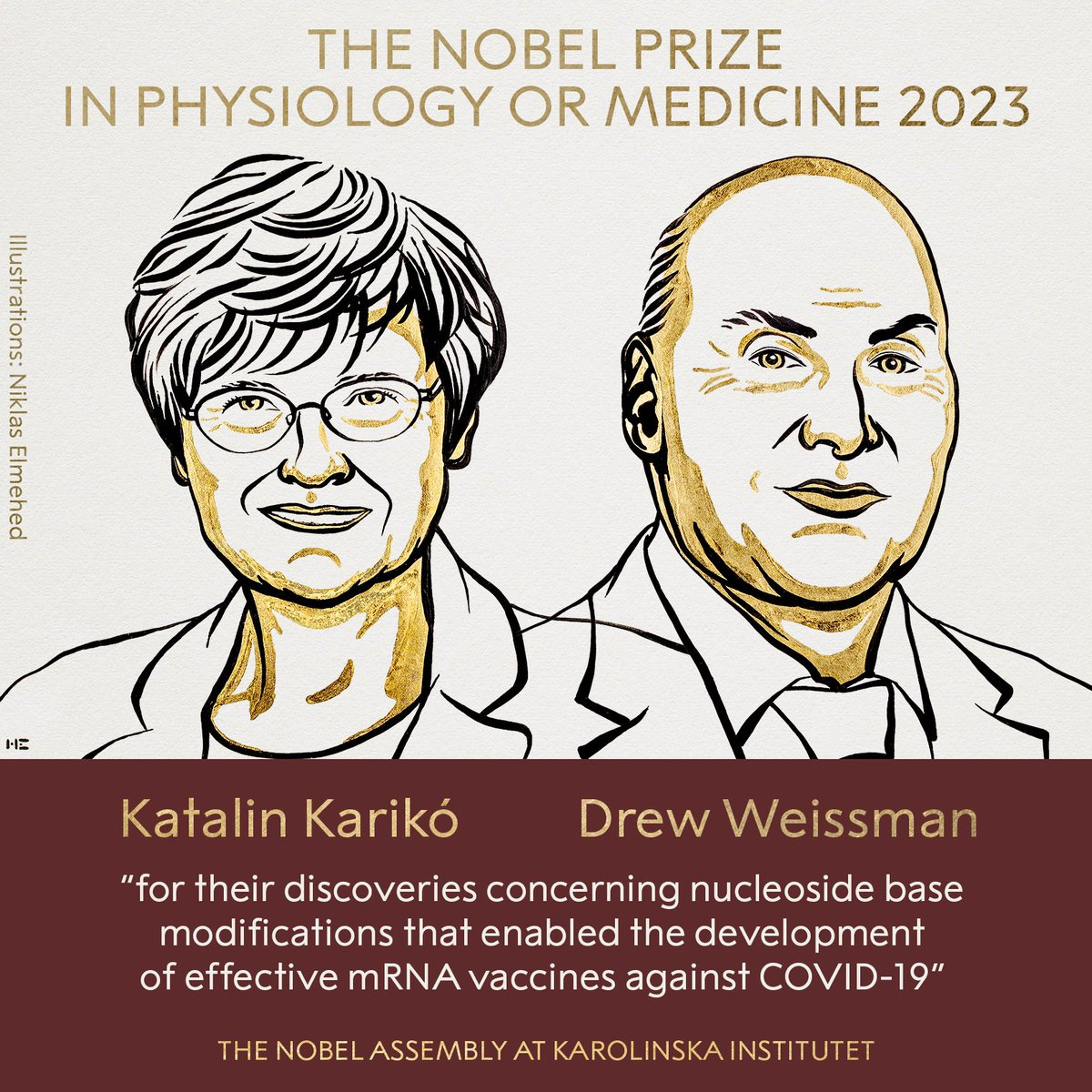
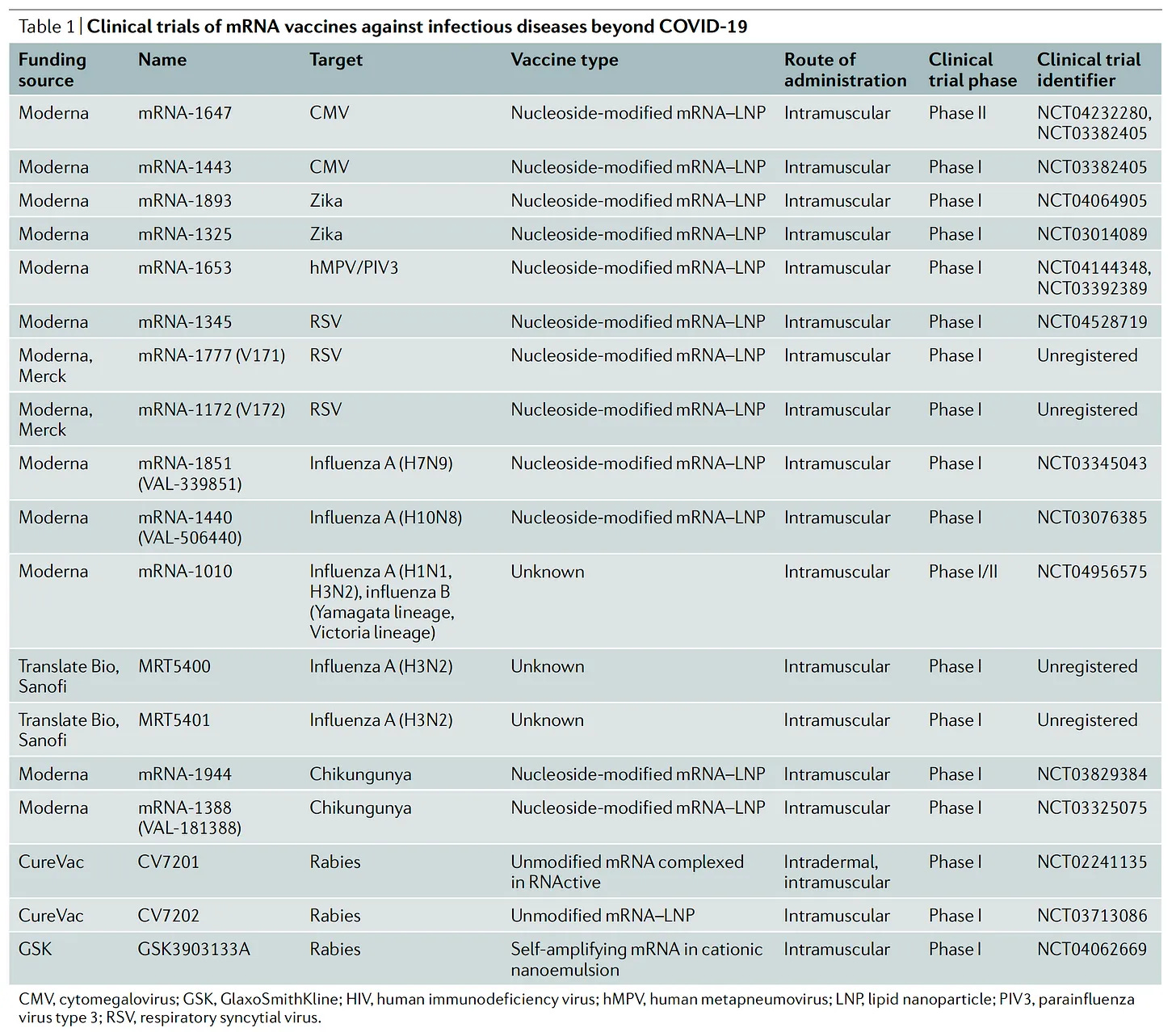

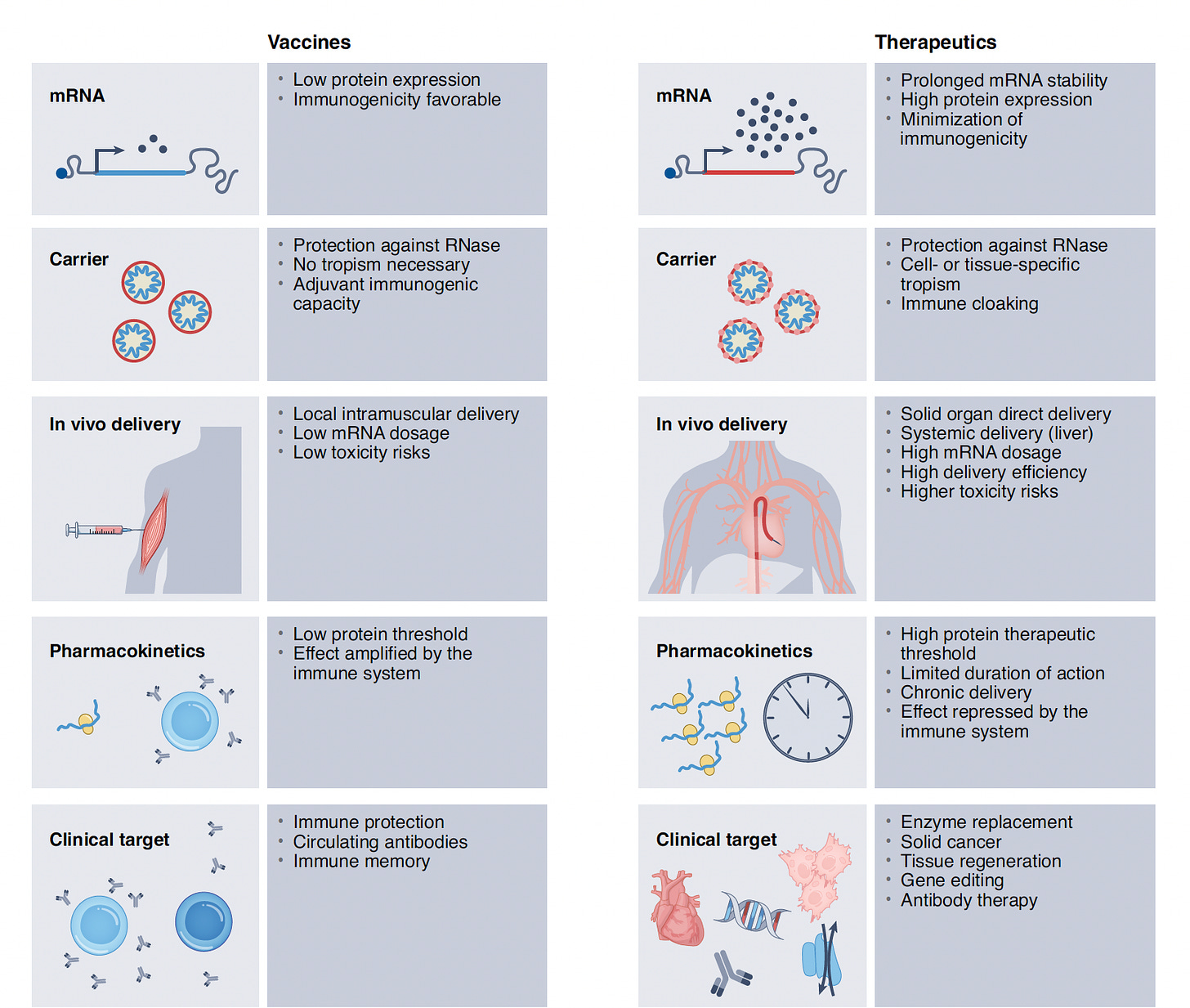


50 million lives saved and counting.
In the Catholic Church I think that would qualify for beatification.
Can we start a petition for sainthood based on this miracle, and include all the researchers who contributed after these initial mRNA platform breakthroughs?
I’m sitting here typing with a somewhat sore back and headache, and very achy left deltoid having received my XBB booster 7 hours ago. We also owe a debt of gratitude to so many on the front lines, the essentials, and the folks who advanced the science and awareness of ventilation and respirators.
Hallelujah, and thanks for the exciting glimpse of the future.
Ingenuity coupled with increasingly sophisticated technology portends many amazing changes in our public health approaches with each passing year. Yet, with all the well-deserved accolades, there is the reality that 25-30% of the population has little or no confidence in vaccines for mitigating COVID19. These same vaccine deniers often depend on social media rumor mills for healthcare decision making. Credible therapies above and beyond antivirals must be added to the mix. Repurposing has been considered, but often pushed aside in favor of new designer drugs with more than just a little commercial interest behind them and at enormous cost to the public debt. In 2020 repurposing via the CURE Drug Repurposing collaboratory (CDRC) was establish by the formation of this public-private agency. CDRC Leadership more recently, however, has altered its original focus in identifying effective therapies by physicians outside the realm of research clinics treating COVID19 cases. Thus, there remains a lack of credible therapy save for the pure antiviral nirmeltrivir/ritonivir even after 4 years of dealing with such a novel infection.
Ref: https://www.fda.gov/drugs/news-events-human-drugs/cure-id-moves-automated-data-collection-light-covid-pandemic